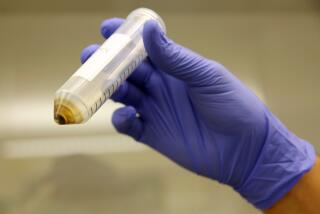In S.F., it’s BYOB: ‘Bring Your Own (Water) Bottle’
If you’re going to San Francisco, be sure to carry a water bottle there.
Why? Because the Board of Supervisors voted this week to ban the sale of single-use bottles of water in city buildings and parks and at city-permitted events, making San Francisco the largest municipality in the country to phase out plastic water bottles. The ban will cover indoor events starting Oct. 1, and will be extended to all events by 2016. There would be exceptions for some sports outings, such as foot races, and planners could apply for waivers if they can’t secure a water supply.
There are good reasons to banish small, single-use plastic bottles. They leave a huge environmental footprint. Producing bottles for American consumption takes about 17 million barrels of oil annually, enough to fuel 1.3 million cars for a year, according to the Pacific Institute. Plus there’s the oil consumed in transporting the containers from bottler to seller. The average American goes through 167 water bottles in a year, but only recycles about 38. San Francisco leaders estimate that tens of millions of empty bottles end up in local landfills each year.
But now that San Francisco has banned the bottle, is the city prepared to quench its citizens’ thirst with plentiful, clean public water? Many cities across the country have failed to maintain or neglected to install adequate drinking fountains. While some consumers choose bottled water because they believe that it is unsafe, or that it tastes bad, others buy it for convenience. They are out and they are thirsty. If the city doesn’t have an adequate system of public fountains, those consumers may end up buying soda or other high-calorie beverages, which would not be affected by the ban. That’s not exactly the best public policy outcome.
So go ahead, San Francisco and other cities: Ban the bottle. But only after you have invested in building and restoring a network of free public water.
More to Read
A cure for the common opinion
Get thought-provoking perspectives with our weekly newsletter.
You may occasionally receive promotional content from the Los Angeles Times.






